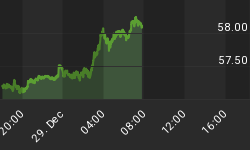The markets have numerous unanswered questions to digest:
- Will Spain accept a bailout?
- How will the market react to another bailout?
- After the election, will Greece stay or go?
- Will the Fed hint at another round of money printing?
- Will the ECB buy bonds or launch a third round of bank loans?
- Will debt problems resurface in the United States soon?
We have stated previously the path overseas seems to be gravitating toward two somewhat binary outcomes for stocks:
- A bottoming process similar to what the S&P 500 experienced in October 2011 or
- An acceleration of declines similar to what global markets experienced in June 2008.
Numerous DeMark exhaustion counts point toward the "bottom" scenario unfolding, but new lows in stocks may be needed before a sustainable rally can occur.
Given all the unanswered questions, it seems logical a bottom would take some time to form. In 2010, a bottom in the S&P 500 formed over three months. The slope of the 50-day moving average worked well as a risk management tool (see below).

A similar bottoming process occurred in 2011. It took roughly five months before the bulls regained control in December. Once again, the 50-day moving average provided good information for investors.

The slope of the S&P 500's 50-day moving average is currently negative, which aligns with a weak intermediate trend. It may be indicative of a market that still has some bearish hurdles to cross.

We never know what event will trigger a rally or selloff when investors are on edge. Could the "Greek slap" give the conservative/pro-bailout parties momentum as voters prepare to head to the polls?
Our current base case for the markets involves additional weakness for stocks, followed by a sharp rally. The weakness could surface soon or after a push toward 1,360. If the S&P 500 drops below 1,266, it may offer an excellent buying opportunity. The video below, which is part one in a three part series, reviews traditional stock charts and DeMark counts for numerous markets. The weight of the evidence aligns with a bottoming process, which suggests it may take some time to unfold. You can improve the clarity of the video by changing the resolution to HD.
If a bailout/central bank-induced rally unfolds, we will be reviewing a shopping list that currently includes India (EPI), Australia (EWA), silver (SLV), and tech stocks (QQQ). India, Australia, and silver would become appealing if the markets begin to react to re-inflation efforts from central banks.
Even in the context of this week's rally in risk assets, the bears remain in control until proven otherwise. However, we have seen enough signs of a possible bottoming process to begin slowly redeploying funds from our heavy cash position.
















